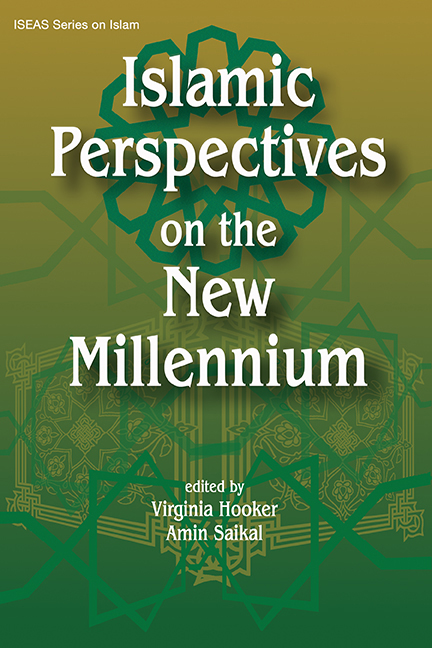Book contents
- Frontmatter
- Contents
- Acknowledgements
- Contributors
- 1 Islamic Perspectives on the New Millennium
- The New World Order
- 2 Islam and the West: Challenges and Opportunities
- 3 Indonesian Responses
- The New Age
- The Economy
- The Nation-State
- Muslim Women
- Law and Knowledge
- Conclusion
- Glossary
- Index of Names
- Index of Subjects
2 - Islam and the West: Challenges and Opportunities
from The New World Order
Published online by Cambridge University Press: 21 October 2015
- Frontmatter
- Contents
- Acknowledgements
- Contributors
- 1 Islamic Perspectives on the New Millennium
- The New World Order
- 2 Islam and the West: Challenges and Opportunities
- 3 Indonesian Responses
- The New Age
- The Economy
- The Nation-State
- Muslim Women
- Law and Knowledge
- Conclusion
- Glossary
- Index of Names
- Index of Subjects
Summary
Whilst relations between the West and the world of Islam are today complex and multi-dimensional, with elements of both conflict and co-operation, in general they are very tense. This tension has its roots not so much in religious but in political and politically motivated perceptual differences, the intensity of which has fluctuated according to the political utility of the issues that have occasioned the two sides to expose their differences. Since the horrific attacks on the United States on 11 September 2001, the tension has sharply escalated. On the whole, two opposing views have come to dominate the Western and Islamic approaches to dealing with each other. One is a Western contention, which has resonated more strongly in Washington than in any other Western capital, that the forces of political Islam which have defied American control or influence constitute a brand of Islamic fundamentalism that threatens Western interests and must be combated. Another is a view, which is widespread among not only the political forces of Islam but also moderate Islamists and ordinary Muslims, that the U.S. “cold warrior” realists have deliberately fabricated the notion of an “Islamic threat” for one important purpose — to maintain a Western sense of superiority and hegemony over the Muslim world.
Yet amid all this, both sides — more out of necessity than anything else — have found it increasingly important to interlock in a globalized world in ways that can help them to minimize their political differences and improve relations. This, however, will only happen should the two sides be prepared to let principles of positive dialogue, based on the mutual accommodation of interests rather than those of opportunism and ideological supremacy, prevail in the conduct of their foreign relations.
This chapter has three main objectives. The first is to explore some of the features that the West and the Muslim world hold in common, which have helped them to pursue durable paths of peaceful coexistence. The second is to tease out the key factors that underlie the growth of tension in the relations between them in recent times. The third is to make a number of proposals for the easing of that tension.
- Type
- Chapter
- Information
- Islamic Perspectives on the New Millennium , pp. 19 - 31Publisher: ISEAS–Yusof Ishak InstitutePrint publication year: 2004

